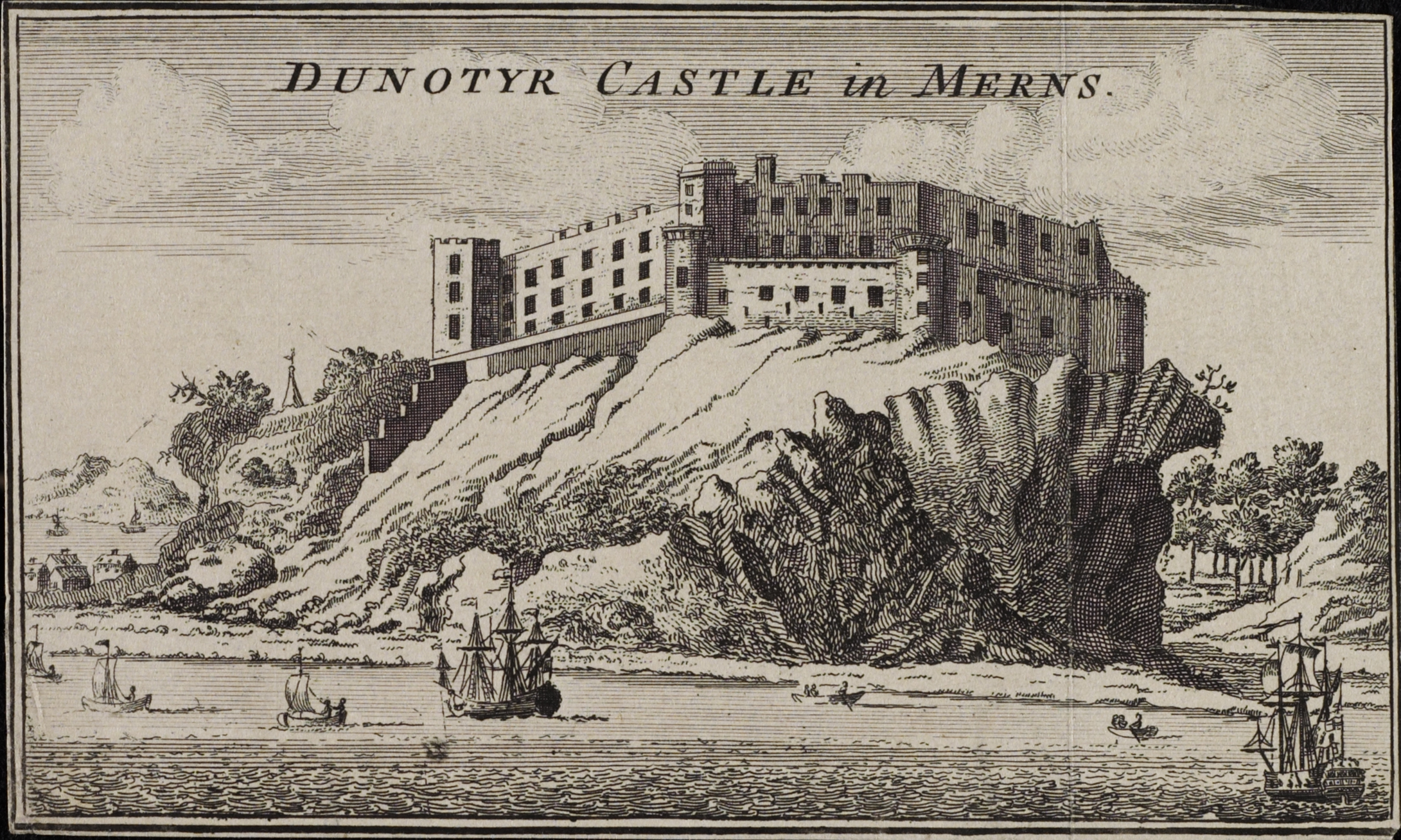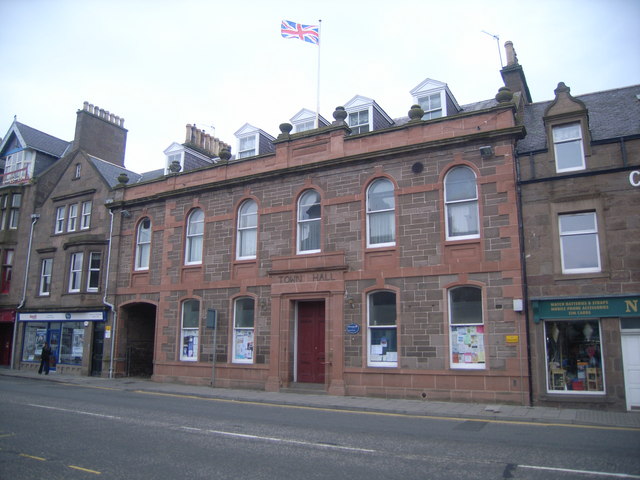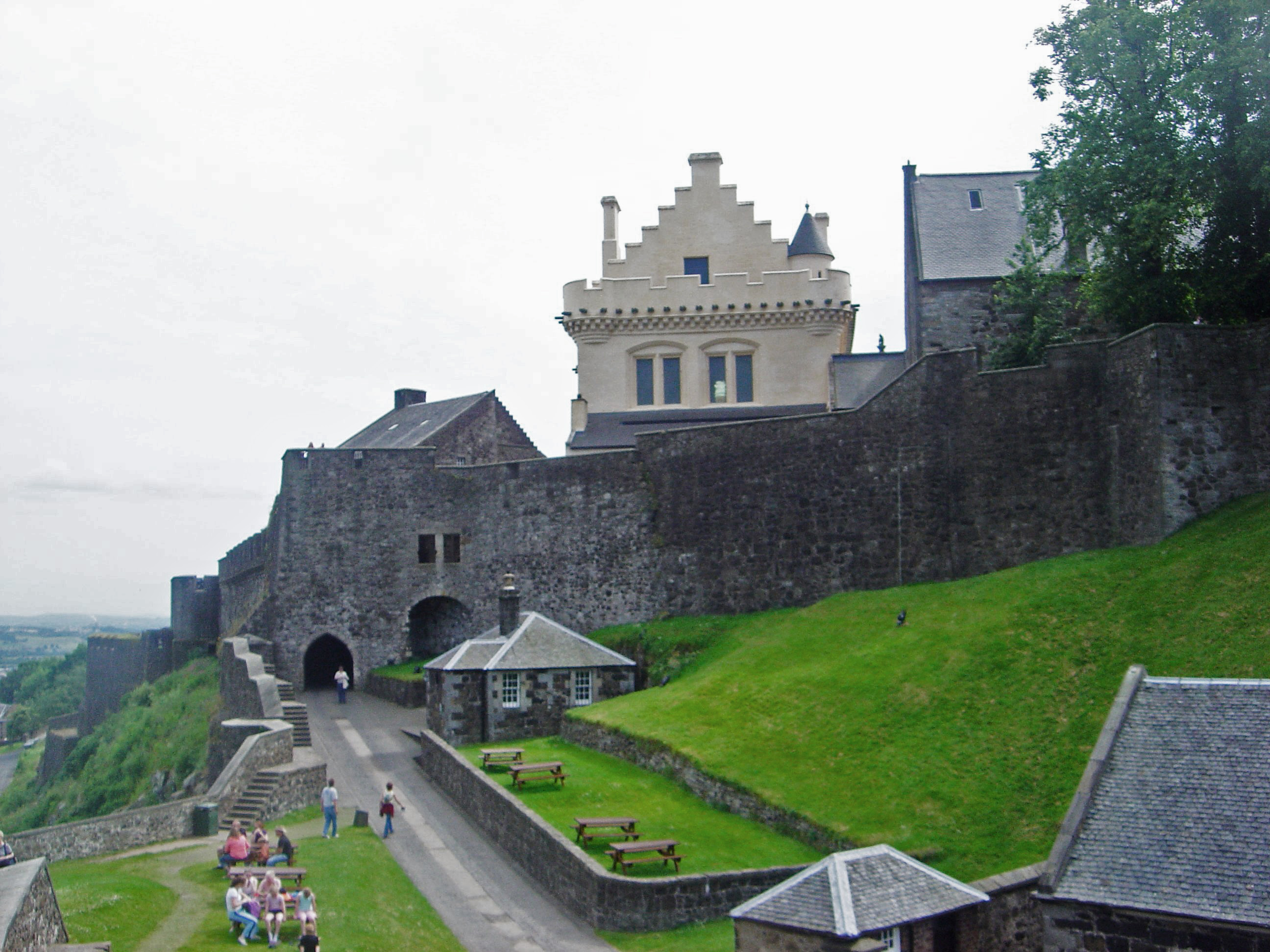|
Saint Duthac
Saint Duthac (also Duthus or Duthak; 1000–1065) was a Scottish Christian prelate who served as Bishop of Ross. He is the patron saint of Tain in Scotland. His feast day is 8 March. Biography and legacy According to the ''Aberdeen Breviary,'' Duthac was a native Scot. Tradition has it that Duthac was born in Tain and educated in Ireland. A chapel was built in his honour and a sanctuary established at Tain by the great Ferchar mac in tSagairt, first Earl or Mormaer of Ross in the thirteenth century, and was ministered by the Norbertine canons of Fearn Abbey. St. Duthus's Chapel, is thought to have been where St Duthac was born. A century later, this sanctuary was notably breached by English supporters who captured Robert the Bruce's wife, daughter and sisters sheltering in the chapel. The chapel was burnt later in political violence between regional power groups, namely the Clan MacKay and the Clan Ross. The ruins of the chapel still exist as a centrepiece of St Duthus ... [...More Info...] [...Related Items...] OR: [Wikipedia] [Google] [Baidu] |
Clan MacKay
Clan Mackay ( ; ) is an ancient and once-powerful Scottish Highlands, Highland Scottish clan from the far north of the Scottish Highlands, but with roots in the old Mormaer of Moray, Kingdom of Moray. They supported Robert I of Scotland, Robert the Bruce during the Wars of Scottish Independence in the 14th century. In the centuries that followed they were anti-Jacobitism, Jacobite. The territory of Clan Mackay consisted of the parishes of Farr, Sutherland, Farr, Tongue, Highland, Tongue, Durness and Eddrachillis, and was known as Strathnaver, in the north-west of the county of Sutherland. However, it was not until 1829 that Strathnaver was considered part of Sutherland, when the chief sold his lands to the Earl of Sutherland, Earls of Sutherland and the Highland Clearances then had dire consequences for the clan. In the 17th century the Mackay chief's territory had extended to the east to include the parish of Reay in the west of the neighbouring county of Caithness. The chief ... [...More Info...] [...Related Items...] OR: [Wikipedia] [Google] [Baidu] |
Dunnottar Castle
Dunnottar Castle (, "fort on the shelving slope") is a ruined medieval fortress located upon a rocky headland on the northeast coast of Scotland, about south of Stonehaven in Aberdeenshire. The surviving buildings are largely of the 15th and 16th centuries, but the site is believed to have been fortified in the Early Middle Ages. Dunnottar has played a prominent role in the history of Scotland through to the 18th-century Jacobite risings because of its strategic location and defensive strength. Dunnottar is best known as the place where the Honours of Scotland, the Scottish crown jewels, were hidden from Oliver Cromwell's invading army in the 17th century. The property of the Keiths from the 14th century, and the seat of the Earl Marischal, Dunnottar declined after the last Earl forfeited his titles by taking part in the Jacobite rebellion of 1715. The castle was restored in the 20th century and is now open to the public. The ruins of the castle are spread over , surroun ... [...More Info...] [...Related Items...] OR: [Wikipedia] [Google] [Baidu] |
Stonehaven
Stonehaven ( ) is a town on the northeast coast of Scotland, south of Aberdeen. It had a population of 11,177 at th2022 Census Stonehaven was formerly the county town of Kincardineshire, succeeding the now abandoned town of Kincardine, Aberdeenshire, Kincardine. It is currently administered as part of Aberdeenshire. The town is known in the local Doric Scots, Doric dialect as ''Steenhive'' () and is nicknamed ''Stoney''. Pre-history and archaeology Stonehaven is the site of prehistoric events evidenced by finds at Fetteresso Castle and Neolithic pottery excavations from the Spurryhillock area. In 2004, archaeological work by CFA Archaeology, in advance of the building of the Aberdeen to Lochside Natural Gas Pipeline, found two short Cist, cists burials containing cremated remains to the southwest of Stonehaven. Radiocarbon dating put the burials in the first half of the 2nd millennium BC, which was the Early Bronze Age in Scotland. The burials contained stone tool artifacts ... [...More Info...] [...Related Items...] OR: [Wikipedia] [Google] [Baidu] |
St Mary's Cathedral, Aberdeen
The Cathedral Church of St Mary of the Assumption, usually known as St Mary's Cathedral, is a cathedral of the Roman Catholic Church in the city of Aberdeen, Scotland. It is the home of the see of the Bishop of Aberdeen, who is the ordinary of the Roman Catholic Diocese of Aberdeen in the Province of St Andrews & Edinburgh. It stands at 20 Huntly Street in Aberdeen. Construction The cathedral was designed by Alexander Ellis and opened in 1860. The spire and bells were added by Robert Gordon Wilson in 1876–77 to mark the church being raised to cathedral status. The organ dates from 1887 and is by James Conacher of Huddersfield. The cathedral was rededicated in 1960 following simplification of the interior in alignment with the reforms of the Second Vatican Council. Stained glass A window of 1978 is dedicated to St John Ogilvie by David Gulland. Monuments The church contains monuments to four Scottish bishops: George Hay; James Kyle; John MacDonald; and Colin Gra ... [...More Info...] [...Related Items...] OR: [Wikipedia] [Google] [Baidu] |
Scottish Gaelic
Scottish Gaelic (, ; Endonym and exonym, endonym: ), also known as Scots Gaelic or simply Gaelic, is a Celtic language native to the Gaels of Scotland. As a member of the Goidelic language, Goidelic branch of Celtic, Scottish Gaelic, alongside both Irish language, Irish and Manx language, Manx, developed out of Old Irish. It became a distinct spoken language sometime in the 13th century in the Middle Irish period, although a Classical Gaelic, common literary language was shared by the Gaels of both Ireland and Scotland until well into the 17th century. Most of modern Scotland was once Gaelic-speaking, as evidenced especially by Gaelic-language place names. In the 2011 United Kingdom census#2011 Census for Scotland, 2011 census of Scotland, 57,375 people (1.1% of the Scottish population, three years and older) reported being able to speak Gaelic, 1,275 fewer than in 2001. The highest percentages of Gaelic speakers were in the Outer Hebrides. Nevertheless, there is a language ... [...More Info...] [...Related Items...] OR: [Wikipedia] [Google] [Baidu] |
James IV Of Scotland
James IV (17 March 1473 – 9 September 1513) was List of Scottish monarchs, King of Scotland from 11 June 1488 until his death at the Battle of Flodden in 1513. He inherited the throne at the age of fifteen on the death of his father, James III of Scotland, James III, at the Battle of Sauchieburn, following a rebellion in which the younger James was the figurehead of the rebels. James IV is generally regarded as the most successful of the House of Stuart, Stewart monarchs of Scotland. He was responsible for a major expansion of the Royal Scots Navy, Scottish royal navy, which included the founding of two royal dockyards and the acquisition or construction of 38 ships, including the ''Great Michael'', the largest warship of its time. James was a patron of the arts and took an active interest in the law, literature and science. With his patronage the Chepman and Myllar Press, printing press came to Kingdom of Scotland, Scotland, the University of Aberdeen and the Royal College o ... [...More Info...] [...Related Items...] OR: [Wikipedia] [Google] [Baidu] |
Calendar Of Saints
The calendar of saints is the traditional Christian method of organizing a liturgical year by associating each day with one or more saints and referring to the day as the feast day or feast of said saint. The word "feast" in this context does not mean "a large meal, typically a celebratory one", but instead "an annual religious celebration, a day dedicated to a particular saint". The system rose from the early Christian custom of commemorating each martyr annually on the date of their death, their birth into heaven, a date therefore referred to in Latin as the martyr's ''dies natalis'' ('day of birth'). In the Eastern Orthodox Church, a calendar of saints is called a ''Menologion''. "Menologion" may also mean a set of icons on which saints are depicted in the order of the dates of their feasts, often made in two panels. History As the number of recognized saints increased during Late Antiquity and the first half of the Middle Ages, eventually every day of the year had at l ... [...More Info...] [...Related Items...] OR: [Wikipedia] [Google] [Baidu] |
Scottish Reformation
The Scottish Reformation was the process whereby Kingdom of Scotland, Scotland broke away from the Catholic Church, and established the Protestant Church of Scotland. It forms part of the wider European 16th-century Protestant Reformation. From the first half of the 16th century, Scottish scholars and religious leaders were influenced by the teachings of the Protestant reformer, Martin Luther. In 1560, a group of Scottish nobles known as the Lords of the Congregation gained control of government. Under their guidance, the Scottish Reformation Parliament passed legislation that Scots Confession, established a Protestant creed, and Papal Jurisdiction Act 1560, rejected Papal supremacy, although these were only formally ratified by James VI in 1567. Directed by John Knox, the new Church of Scotland adopted a Presbyterian polity, Presbyterian structure and largely Calvinist doctrine. The Reformation resulted in major changes in Scottish education, Scottish Renaissance painted c ... [...More Info...] [...Related Items...] OR: [Wikipedia] [Google] [Baidu] |
Relics
In religion, a relic is an object or article of religious significance from the past. It usually consists of the physical remains or personal effects of a saint or other person preserved for the purpose of veneration as a tangible memorial. Relics are an important aspect of some forms of Buddhism, Christianity, Islam, shamanism, and many other religions. ''Relic'' derives from the Latin ''reliquiae'', meaning "remains", and a form of the Latin verb ''relinquere'', to "leave behind, or abandon". A reliquary is a shrine that houses one or more religious relics. In classical antiquity In ancient Greece, a city or sanctuary might claim to possess, without necessarily displaying, the remains of a venerated hero as a part of a hero cult. Other venerable objects associated with the hero were more likely to be on display in sanctuaries, such as spears, shields, or other weaponry; chariots, ships or figureheads; furniture such as chairs or tripods; and clothing. The sanctuary of th ... [...More Info...] [...Related Items...] OR: [Wikipedia] [Google] [Baidu] |
Incorrupt
Incorruptibility is a Catholic and Orthodox belief that divine intervention allows some human bodies (specifically saints and beati) to completely or partially avoid the normal process of decomposition after death as a sign of their holiness. Incorruptibility is thought to occur even in the presence of factors which normally hasten decomposition, as in the cases of saints Catherine of Genoa, Julie Billiart and Francis Xavier. Catholicism In Catholicism, if a body is judged as incorruptible after death, this is most often seen as a sign that the individual is a saint. Canon law allows inspection of the body so that relics can be taken and sent to Rome. The relics must be sealed with wax and the body must be replaced after inspection. These ritual inspections are performed very rarely and can only be performed by a bishop according to the requirements of canon law. A pontifical commission can authorize inspection of the relics and demand a written report. After solemn inspection ... [...More Info...] [...Related Items...] OR: [Wikipedia] [Google] [Baidu] |
Annals Of Ulster
The ''Annals of Ulster'' () are annals of History of Ireland, medieval Ireland. The entries span the years from 431 AD to 1540 AD. The entries up to 1489 AD were compiled in the late 15th century by the scribe Ruaidhrí Ó Luinín, under his patron Cathal Óg Mac Maghnusa, on the island of ''Senadh-Mic-Maghnusa'', also known as ''Senad'' or Ballymacmanus Island (now known as Belle Isle, where Belle Isle Castle is located), near Lisbellaw, on Lough Erne in the kingdom of ''Fir Manach'' (Fermanagh). Later entries (up to AD 1540) were added by others. Entries up to the mid-6th century are retrospective, drawing on earlier annalistic and historical texts, while later entries were contemporary, based on recollection and oral history. Thomas Charles-Edwards, T. M. Charles-Edwards has claimed that the main source for its records of the first millennium A.D. is a now-lost Armagh continuation of the ''Chronicle of Ireland''. The Annals used the Irish language, with some ... [...More Info...] [...Related Items...] OR: [Wikipedia] [Google] [Baidu] |









